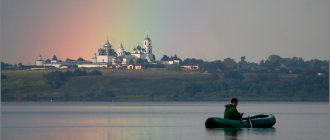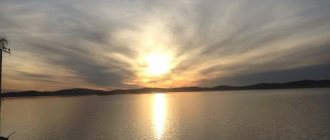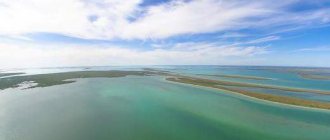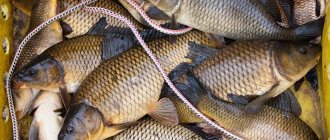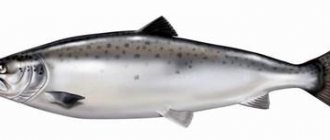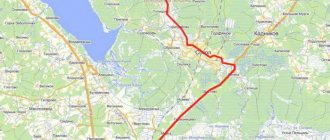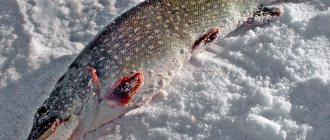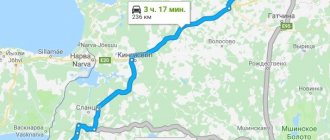About Lake Khanka
The reservoir is located on the border of the Russian Federation and the People's Republic of China, namely on the border of Primorsky Krai (Russian Federation) and Heilongjiang Province (People's Republic of China). It is the largest in the Far East. Its area depends on weather conditions and changes periodically depending on the replenishment or decrease of waters. During the wettest period of the year, the highest recorded figure was 5010 square meters. km. During the driest periods, the area decreases to 3940 square meters. km. The area indicator when the water level is at the average level is 4070 square meters. km. The length exceeds 90 km, the width is 67 km. The average depth varies between 3 m and 4.5 m. It rarely exceeds 6.5 m, although the greatest depth recorded is 10.6 m.
Lake Khanka is replenished with water from 24 small rivers. At the same time, only the Sungacha River flows out of it. It flows into the large Ussuri River, which in turn replenishes the waters of the giant Amur.
Khanka is an ancient lake, so there are many legends about it. It is famous for the huge number of bird species that live on it. Their numbers reach 330 different species. Because of this, in ancient times it was called Khankai-Omo, which means “Sea of Bird Feathers.”
Due to the constant strong winds that stir up the waters of the Khanka, it is never clean.
In accordance with the convention, which was adopted in 1971 in Iran in Ramsar, the lake itself and all adjacent territories acquired the status of international wetlands. Later, namely in 1990, the Khanka Nature Reserve was organized.
In 1996, China and Russia created the Lake Khanka Nature Reserve based on the already existing Khanka and Xingkai Hu reserves in China.
Recreation centers of Lake Khanka
The weather on Lake Khanka is favorable for travelers. The climate is monsoon. In winter there is little snow and dry. In summer it is hot and humid; the water temperature on Lake Khanka can reach +30 degrees. Constant strong winds blow, which attracts surfers to the pond.
At the end of November, the lake freezes, and ice fishing enthusiasts come here.
All this explains the large number of recreation centers on the shores of Lake Khanka. As a rule, they are all located on the more convenient western coast of the lake.
Recreation center Fortuna
The Fortuna recreation center is an excellent place for a family holiday on the shores of the legendary lake. You have a choice of four-bed houses with a cozy terrace or fully equipped rooms on the second floor of the cottage. The rooms have a fresh modern renovation, new furniture, plumbing, and electrical appliances.
Right on the shore of the lake there are gazebos with a barbecue area, tables and chairs (all included in the price). You can park your car at the recreation center next to the house.
The beach is on the territory of the base. Clean sand, flat bottom. Shallow depth, no holes or cliffs - an ideal place for families with children.
All conditions have been created for excellent fishing. The Fortuna recreation center is located in the village of Astrakhanka, not far from the village of Kamen-Rybolov.
Recreation center Pioneer
The Pioneer recreation center welcomes lovers of active recreation all year round. Those arriving at the base are accommodated in furnished houses for 4 - 6 people or in small chalets for one or two tourists. The houses and chalets have everything you need for cooking, refrigerators, and dishes. Those who don't want to bother in the kitchen can always dine in a cafe.
For those who like to relax in a savage tent, there is a special area. You can rent all the necessary equipment. Sports equipment is also offered.
A special feature of a holiday at this base is the opportunity to go on a horseback excursion through the picturesque surroundings. Rent a boat for fishing or hunting.
Fans of gatherings will enjoy gazebos with barbecues and a Russian bathhouse. If fishing was unsuccessful, you can always buy fresh fish at the market next to the recreation center.
The Pioneer recreation center has its own convenient sandy beach. Cleanliness and order are constantly maintained here. In winter, fishing will be the main entertainment. You can rent all the necessary equipment.
Recreation center Troitskoye
The Troitskoye recreation center offers accommodation in 16 chalet houses designed for 2 to 4 people. The rooms have kettles, some have refrigerators (you need to check when booking). For cooking there is a shared kitchen with stoves, dishes, and a microwave. Products can be purchased in the village shops a five-minute walk from the recreation center. In addition to the houses, on the territory of the base there are gazebos of different capacities. Rental of barbecues is organized. The sanitary block has toilets and showers.
You can come to Troitskoye with pets. Parking for cars is provided.
For a beach holiday, the administration of the base offers catamarans, boats, bananas. For fishing lovers - fishing rods. Children will enjoy taking a ride into the water from an inflatable slide. On the territory of the Troitskoye recreation center there are all conditions for savages to relax: a specially equipped area for placing tents, rental of tourist equipment.
What kind of fish lives in the lake
Aquatic fauna is the main advantage of a reservoir. Hanki fish is very diverse. There are 74 species in total. Among them there are species of underwater inhabitants familiar to fishermen, as well as rare fish that are protected by the state, as they are listed in the Red Book.
Prohibited species include the following:
- black cupid;
- Som Soldatov;
- small-scaled yellowfin;
- sturgeon;
- black Amur bream;
- yellowcheeks;
- baby killer whale;
- Kaluga;
- Chinese perch.
Also, 20 species of fish are commercially available and are actively caught by enterprises. Some are so common that fishing on Lake Khanka has become the most popular type of recreation.
The most common types include the following:
- Amur catfish;
- zander;
- carp;
- gubar;
- pike;
- superlative;
- bleak;
- crucian carp;
- silver carp;
- Mongolian redfin;
- White amur;
- rudd;
- snakehead, etc.
All fishing enthusiasts living in the Primorsky Territory note that the most interesting and productive fishing takes place here.
You can fish throughout the year, except for the spawning period. Winter fishing on Khanka is also quite popular. Of course, if you come across a prohibited fish, the most you can do with it is take a quick photo and then immediately release it.
Here is the most interesting and productive fishing in Primorye
Fishing Features
If fishing was chosen as a method of recreation, Lake Khanka and the Primorsky Territory as a whole will provide a lot of opportunities for this. The main thing is to properly prepare for fishing, and then success will not be long in coming. In addition, you need to choose the right time and not lose hope if you don’t get a good catch once.
The success of fishing on Khanka directly depends on whether the fish has approached the shores of the reservoir. This doesn’t happen every day, so luck also influences the amount of catch. The lake contains sufficient quantities of food fish for predators, and therefore they can eat well even far from the shores. Despite this, pike, snakehead and catfish can be found in the vegetation in coastal waters. There are not very many of them here, and sometimes you have to work hard to find the predator you are interested in.
Fishing on Lake Khanka
Lake Khanka. Primorsky Krai.
The largest lake in the Far East, one of the largest lakes in Europe, Khanka, occupies the territory of Russia and China, with most of it located on the Russian side. The lake mirror occupies an average of 4070 km 2. It stretches 95 kilometers in length with a maximum width of about 67. The lake has changed many names until the current one, which comes from the Chinese “hanhai” - a word meaning depression, was assigned to it.
In fact, the depression is not that deep: on average, the water thickness does not exceed four and a half meters, and in the deepest place - ten and a half. The main part consists of depths from one to three meters. The lake is frozen from mid-November to April, and in summer its waters warm up to 30°C.
The lake belongs to the Amur basin, into which the Sungacha River flowing from Khanka through Ussuri carries its waters. Of the twenty-four rivers flowing into the lake, the largest are: Komissarovka, Melgunovka and Ilistaya. The water in the lake is cloudy due to the sedimentation of loose masses by inflowing tributaries and the constant mixing of the water mass by strong winds. Changes in water levels depend on the season and are subject to cyclicity: every 26 years it changes by two meters.
The Khanka lowland is replete with meadows and swamps, and the waters of the Khanka are replete with floodplains, which are communities of various plants that form a turf covering the surface of the lake mirror. The untouched nature, the abundance of rare plants, birds and animals in the vicinity of the lake became the reason for the organization of the Chinese-Russian nature reserve in the area of its lands. Its border is drawn in some places directly along the banks of the Khanka, but there are large areas to which the reserve status does not apply.
LAKE NAME
There are several versions about the origin of the name of Lake Khanka.
- Writer and researcher, Arsenyev V.K. (life 1872-1930), suggested the following about the name of the lake: “Most likely, the name of the lake came from the word “hanhai” (depression - lowland in Chinese). And the Russian people later remade this name in their own way. And they began to call Lake Khanka.”
- Editor of the newspaper Gusev O.M. did not agree with Arsenyev and in his book “Ancient Rus'...” he wrote: “Khanka - came from the Russian word “hanga” (reed, reed) - see V. Dahl’s dictionary. There are a lot of reeds on the lake. Hence the name of the reservoir.”
- Currently, this version is being refuted and it is believed that it is impossible to translate the name of the lake into Russian, since it was formed through multiple changes.
GEOGRAPHY AND HYDROLOGY
Lake Khanka is located on the border between China and Russia. China owns a large (server) part of the reservoir. The lake belongs to the Amur River basin.
The area of Lake Khanka is a value that varies depending on climatic conditions, ranging from 4000 to 5000 square meters. km.
The length of the reservoir is about 90 km, the width is within 70 km, many small rivers flow into the lake, and the only river that flows out is the Sungacha.
The lake is not very deep, the average depth is 4.5 m, the maximum is 6.5 m.
The water in the lake is cloudy due to the strong winds that prevail in this area, and the water is mixed with sand and silt.
Lake Khanka
Lake Khanka is located on the border of the Russian Federation (Primorsky Territory) and the People's Republic of China (Heilongjiang Province). Most of the lake is located in Russia. China owns its northern part, as well as the neighboring Malaya Khanka Lake. Lake Khanka is located in the center of the Khanka Lowland, its shape resembles a pear. This is the largest freshwater reservoir in the Far East. Lake Khanka is also unique in its diversity of flora and fauna. In order to preserve the unique ecosystem of the lake, the international reserve “Lake Khanka” was created in 1996. In 2005, it received the status of a UNESCO biosphere reserve.
The etymology of the name of the lake is not exactly clear. In ancient times it was called “Khankai-Omo”. Translated from Chinese it means “Sea of Bird Feathers”. Also in China there is another name for the lake - Xingkai-hu - “Lake of Prosperity and Prosperity”. According to a more prosaic version, the name of the lake can be translated simply as “depression.”
Lake Khanka Primorsky Krai
Lake Khanka is located on the territory of two countries: Russia and China. On the map it has an interesting shape of an inverted pear with a tail. The narrow part of this “pear” is located in the center of the Prikhankai lowland, in the Primorsky Territory. Geographers believe that the size of Lake Khanka in the past was three times larger. It appeared as a result of enormous tectonic shifts. The size of Lake Khanka has been constantly changing, and this process is not yet finished.
Interestingly, the area of Lake Khanka cannot be determined by one constant number. In the rainy season it is more than 5,000 square kilometers, in the dry season it is less than 4,000.
Despite its large size, it is a relatively shallow body of water. The average depth of Lake Khanka is 4.5 meters, the maximum limit is just over ten meters.
Holidays on Lake Khanka
For residents of the Primorsky Territory, Lake Khanka is the most accessible body of water for beach and active recreation. The abundance of fish in Lake Khanka makes this place popular among fishermen. The Khanki coast, located in the Khanki region, is better equipped than others. There are sections of the coast covered with sand. The weather is favorable for holidays on Khanka from the beginning of summer. While it is still rainy and foggy in the main territory of Primorye, dry and warm weather is already settling in Khanka.
Tourists can stay here at one of the many recreation centers. A variety of housing is located on the coast from the village of Kamen-Rybolov to the border with China (the village of Turyev Rog). Popular holiday destinations are the bases “Pioneer”, “Fortuna”, “Khankai”, “Ba Gua” and others. On the beach, vacationers are offered popular water attractions - boat rides, banana boat rides, and water slides. Don't miss the opportunity to try your hand at windsurfing. The winds that are ideal for this sport blow on the lake. Active tourists can also go on excursions in the surrounding area and horseback riding.
The fish in Lake Khanka are very diverse. There are more than 70 species in total, about 20 of them are allowed to be caught. Here you can catch carp, silverfish, pike, silver carp, crucian carp, Amur catfish and others. There are also many Red Book species of fish here. These include black carp, yellowfin, black Amur bream, small-scaled yellowfin.
Fishing equipment for every taste can be rented at recreation centers. If you wish, you can be taken by boat to the most fishing spots of the lake.
The Khanka Nature Reserve is of international importance. It is home to many rare birds, fish, amphibians and reptiles. Among them, it is worth highlighting the Far Eastern tortoise. Another Red Book inhabitant of Khanka is the lungfish (pineapple). As the name suggests, this fish can breathe both under and above water.
The flora of Lake Khanka is also unique. More than 600 different species of trees, shrubs, vines and grasses can be found here. The shores of the lake are overgrown with reeds, sedges and forbs. Real forest can only be found in the south of the lake.
Another interesting feature of the flora of Khanka is the floodplains. This is the name of dense plant turf that covers the water surface for many kilometers.
Representatives of the fauna on the shores of Lake Khanka include foxes, raccoon dogs, muskrats and many other rodents - mice, chipmunks. Meadows with tall grass are home to roe deer. The lake has very favorable conditions for birds. Many of them arrange nesting sites on the banks. Others are found only in winter or during the migration season. The birds living here are listed in the Russian and international Red Books. Amateur ornithologists are better off going to the banks of the Khanka, located in the Chernogovsky and Spassky districts. There are several ecological routes on the territory of the Khankaisky Nature Reserve. You can find out more about the conditions for visiting the reserve on its official website. A tour of the reserve in a group of up to 6 people, accompanied by a guide on the reserve’s transport, will cost about 3,000 rubles per group. Accommodation is possible on the territory of the reserve. The price is about 500 rubles per bed per day.
Nature
The Khanka Nature Reserve is of international importance. It is home to many rare birds, fish, amphibians and reptiles. Among them, it is worth highlighting the Far Eastern tortoise. Another Red Book inhabitant of Khanka is the lungfish (pineapple). As the name suggests, this fish can breathe both under and above water.
The flora of Lake Khanka is also unique. More than 600 different species of trees, shrubs, vines and grasses can be found here. The shores of the lake are overgrown with reeds, sedges and forbs. Real forest can only be found in the south of the lake.
In July, the lake is covered with a pink flowering carpet. This is a relict plant listed in the Red Book - Komarov lotus. This plant's cold tolerance allows it to grow in extreme local climates.
Another interesting feature of the flora of Khanka is the floodplains. This is the name of dense plant turf that covers the water surface for many kilometers.
Representatives of the fauna on the shores of Lake Khanka include foxes, raccoon dogs, muskrats and many other rodents - mice, chipmunks. Meadows with tall grass are home to roe deer. The lake has very favorable conditions for birds. Many of them arrange nesting sites on the banks. Others are found only in winter or during the migration season. The birds living here are listed in the Russian and international Red Books. Amateur ornithologists are better off going to the banks of the Khanka, located in the Chernogovsky and Spassky districts. There are several ecological routes on the territory of the Khankaisky Nature Reserve. You can find out more about the conditions for visiting the reserve on its official website. A tour of the reserve in a group of up to 6 people, accompanied by a guide on the reserve’s transport, will cost about 3,000 rubles per group. Accommodation is possible on the territory of the reserve. The price is about 500 rubles per bed per day.
